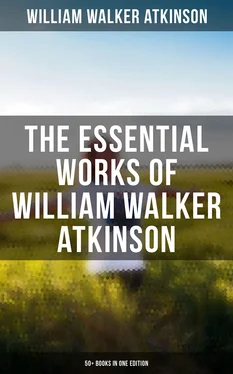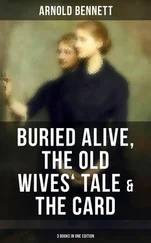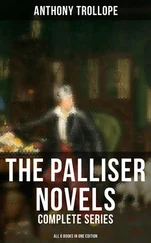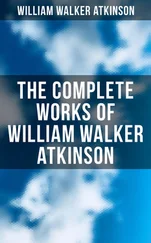But, theoretically, the work may be carried on still further, until at last a limit is reached where we are unable to divide the water into any smaller parts, without separating its chemical constituents from each other, in which latter case there would be no water at all, its chemical constituents (or Atoms) having separated and now appearing as two atoms of Hydrogen and one atom of Oxygen, separated and apart and no longer forming a molecule of water.
Well, this smallest possible part of water (or any other form of Substance) is a Molecule. Remember the Molecule is the smallest part of that kind of Substance that can be produced by division and sub-division, without destroying the "kind" of the Substance. It is the smallest part of any kind of Substance that can exist by itself, and maintain its "kind."
In order that you may grasp the minuteness of the Molecule, we may mention that Science claims that no molecule, even the largest, is of sufficient magnitude to be seen under even the strongest microscope. It has been calculated that if a drop of water as large as a pea were magnified to the size of the Earth, the molecules would then appear no larger than the original drop. The space between the molecules is believed to be considerably larger than the molecules themselves.
The figures that are necessary to use in connection with molecular Substance are likely to stagger the imagination. Besides speaking of the molecules of inorganic Substance, it may be interesting to note that a spider's thread is so fine that a piece of it large enough to circle the earth would weigh only half a pound. And yet each thread is composed of six thousand filaments. And each of these minute filaments may be divided into tiny bits, and each bit will still be a Mass of Substance containing thousands of molecules and their constituent chemical atoms. There are living, microscopic creatures, so small that five millions of them might be crowded into a space the size of a pin head. And yet each of them have organs. And in these organs fluids circulate. Try to figure out the size of the molecules of the fluids circulating in these tiny organs, not to speak of the chemical atoms.
When you handle a coin, an infinitesimal portion of it is worn off—can you figure the size of the molecules composing that part? When a rose throws off its perfume, it emanates tiny particles of itself—can you measure or weigh the molecules composing that odor? The human mind is compelled to realize its finiteness when it considers these things—but we have only just begun to consider the smallness of Things.
An "Atom" is the chemical unit of Substance—that is, the smallest chemical part that can enter into combination. It has been considered indivisible—that is, incapable of further sub-division. That is, it has been so considered, until very recently, but the latest discoveries have exploded this idea, and have shown the Atom is composed of certain other Things, as we shall see a little later on. Still we may use the Atom as a very good unit of measurement, for it still represents the unit of chemical Substance, just as the molecule is the unit of physical Substance. In order that you may understand the difference between Molecules and Atoms—physical units, and chemical units, let us give you a few examples.
Take a molecule of water—the physical unit, you remember. When it is chemically separated or analyzed, it is found to contain two atoms of hydrogen, and one atom of oxygen—both chemical units, remember—which when united and combined, form water, but which when separated are simple atoms of certain chemical gases. The proportion in water is always the same, two of hydrogen and one of oxygen—this is the only partnership that will form water. The molecule of table salt contains one atom of sodium and one of chlorine. The molecule of air contains five chemical gases, of which nitrogen and oxygen are the principal ones, the proportion being about three parts of nitrogen to one of oxygen. Some molecules are far more complex, for instance the molecule of sugar is composed of forty-five chemical atoms, and sulphuric acid of seven. An atom is estimated at one-250,000,000th of an inch in diameter.
But this is not all. The old theory of the finality, and ultimateness of the Atom has been shattered by the recent discoveries of Science. The atom of Hydrogen was formerly considered to be the refinement of Substance—the Ultimate Atom—the smallest and finest Atom possible or known—the last thing that could be imagined about Substance. Some even went so far as to declare that the Atom of Hydrogen was the Ultimate Element, that is the Element out of which all other atoms were made—the mother of Atoms—the Origin of Substance. It was supposed that all other Atoms of Matter were composed of a varying number of hydrogen Atoms, which themselves were "vortex-rings in the Ether"—and that analysis could go no further. Science rested on its oars, and pronounced the work of a century completed.
But alas! no sooner was this position reached, than the discovery of Radiant Matter and the formulation of the "Corpuscle Theory" brought down the whole theoretical structure, and Science was compelled to take up the hunt again, and to probe further into the inner recesses of Things for the Ultimate Thing. But, nevertheless, Atoms still exist, although their finality is no longer urged. The facts remain, although the theory has fallen.
Let us see about this latest theory—the Corpuscle or Electron Theory. The discovery of Radiant Matter, and the investigation of the late discovery of Radium, has led to the further discovery that each Atom, instead of being a "thing-in-itself" is a little mass containing numerous other "Things" called "Corpuscles" (or "Electrons," because electrified). The theory is this, briefly: That each Atom is a minute mass of Substance containing a number of "electrified particles," which are known as Electrons, in constant motion and vibration, revolving around each other, as do the planets, suns, and moons of the Universe—in fact each chemical Atom is like unto a Universe in itself. The simplest Atom—that which was supposed to be the "Ultimate Atom"—the Atom of Hydrogen—is supposed to contain within its tiny self no less than 1,000 minute Corpuscles, which because electrified are called "Electron," revolving in fixed and regular orbits within the containing globe of the Atom. The more complex forms of Atoms are supposed to contain a far greater number of Electrons, the authorities estimating those in an Atom of Oxygen at 10,000; those in an Atom of Gold, 100,000; and those in an Atom of Radium, 150,000. These figures are of course mere "scientific guesses" but when compared with the similar "guess" regarding the size of the Atom, they give a startling illustration of the size of the newly discovered Corpuscle or Electron.
Another authority, for an illustration, asks us to consider a great globe about 100 feet in diameter—that is, of course, 100 feet through its centre. Let the globe represent the Atom. Then imagine 1,000 minute "specks," each the size of a pin-point, composed of Substance, and each containing, as in a capsule, an atom of electricity. Each "speck" is revolving around each other in a regular orbit, in that great "100 feet through" globe, and keeping well away from one another. That will give you an idea of the relative size of the Electrons and Atoms, and the room that the former have to move about in—good many feet between each, you will notice. Lots of room, and plenty to spare. Try to figure out the size of an Electron.
Many readers of the magazines have been confused as to the relation between the Corpuscles and the Electrons (or Ions, as some have called the latter.) The matter is very simple. They are both the same. The Corpuscle is the tiny particle of Matter, which because it is electrified and has thus become the "unit of electricity," is called an "Electron." From the viewpoint of Substance we call the tiny particle a "Corpuscle"—from the viewpoint of Electricity, we call it an "Electron."
Читать дальше












